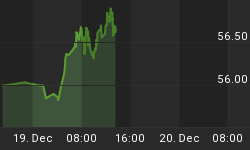Before exploring the latest boost to the Aussie, let's first go over today's surprisingly smaller than expected 25-bp rate cut from the European Central Bank. The ECB is likely to use the next 4 weeks in elucidating its intention to keep the door open for further conventional easing (rate cuts) and starting non conventional easing (asset purchases and extending term lending) as early as the next meeting. Currency markets are no longer subscribing to the much punditized notion that slower/ further ECB rate cuts keep it behind the curve at the expense of the euro. The realities of the market remain shaped by the positive impact of rising risk appetite on EUR, GBP, CAD, AUD, NZD at the expense of JPY and USD.
The latest burst in risk appetite boosted the Norwegian krone and the Aussie at the top of the list of major currencies. Ive long discussed in previous notes highlighting the long term fundamentals of these two currencies on the basis of positive fiscal balances, favourable external imbalances and relatively generous yield foundation. The Norwegian currency has practically become a household name as of late after outperforming all major currencies since the beginning of the year. It is also the only currency to have appreciated against the price of gold. Chapter 8 of my book Currency Trading & Intermarket Analysis made the case for the Norwegian Krone for being more than just an energy-dependent currency. (The book was completed in last summer).

Aussie traders will find long term positives in the latest USDA report showing US farmers to reduce total acres with corn, soybeans and wheat this year. The USDA announced that planned wheat plantings were to drop 7.1% from last year when seedings were the highest in 10 years. Australias position as a leading top producer and exporter of wheat, allows it to gain from the rise in crop, as was the case in 2007 to H1 2008.
Forex traders seeking more concrete trading ideas can find the track record of my trading calls favouring AUD, and NOK by clicking here .
With US jobless claims at fresh 27-year high of 669K and continuing claims at a record 5.73 million, it is a reminder that macroeconomic deterioration in the US is far from having reached its trough. Even ifFriday's March jobs report from the USshows further stabilizationon the payrolls front (as did the last 3 reports), the US unemployment rate is likely to exceed 8.1%, thereby, surpassing that of the Eurozone and Germany, a development that could notbe imagined just a few months ago bythe classic critics of the Eurozone model. And with US consumer credit delinquencies in Q4 surging to an all time high, the deleveraging process within US households relative to that of the Eurozone is another dynamic supporting medium term stabilization in the single currency.
Funding the Fund with Gold. TheG20 announcement of tripling IMF resources to $750 billion offered an extra boost for equity markets and higher yielding currencies at the expense of further damage in the dollar and the yen. The G20 confirmed our predictions that central banks will incorporate gold sales to finance assistance for lower income nations. Central banks gold selling would also help stabilize any renewed selling in the greenback and prevent any unwanted appreciation in other currencies.
China's aspiring role for becoming the IMF of the Eastern Hemisphere fits with increased assistance for the multilateral institution ahead of the WB/IMF meeting later this month in Washington. China's various currency swap arrangements totaling CNY650 billion with its trading partners (South Korea, Hong Kong, Malaysia, Indonesia, Belarus and Argentina) comprise a major step towards turning the yuan into an invoicing currencya natural course for bolstering its role as a reserve currency. Chinas membership in the Inter-American Development Bank and its US$350 million contribution to the agency's lending, should also enhance its role in assisting Latin American and the Caribbean nations.















